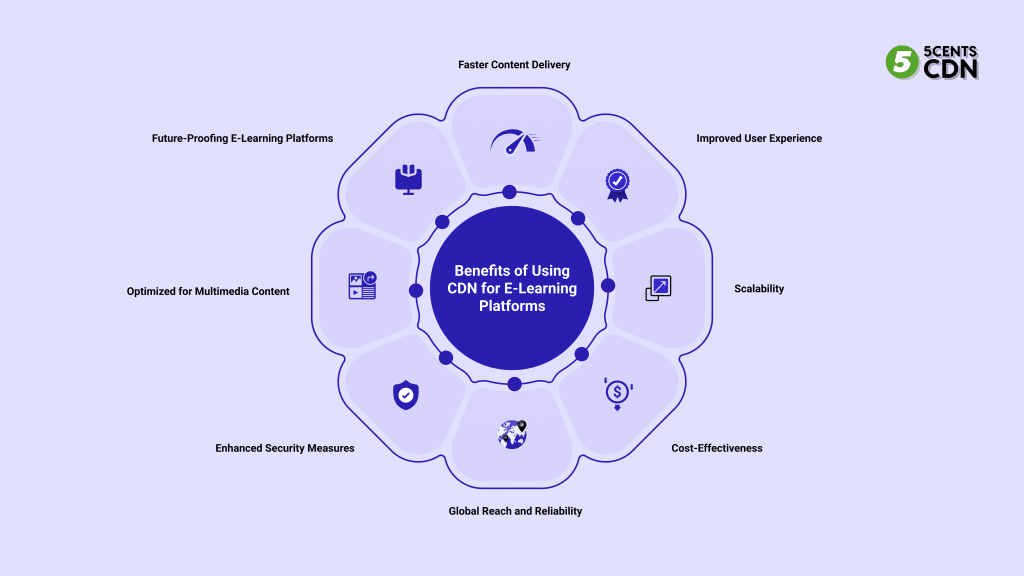In the rapidly evolving world of online education, e-learning platforms are constantly seeking ways to enhance the learning experience. A key factor in achieving this is ensuring fast and reliable content delivery, regardless of the learner’s location. This is where CDN for e-learning comes into play. By leveraging a geographically distributed network of servers, CDNs optimize the delivery of educational content, including videos, images, and interactive modules, leading to faster loading times, improved user engagement, and a more effective learning environment. This article explores the transformative impact of CDNs on e-learning and how they are shaping the future of education.
What is a CDN?

A CDN is a geographically distributed network of servers that work together to deliver internet content efficiently. Instead of relying on a single origin server, CDNs store copies of website content, such as images, videos, and other static assets, on multiple servers located closer to users. This reduces the distance data has to travel, resulting in faster loading times and improved website performance.
Why are CDNs Crucial for E-Learning?
E-learning platforms often host a wealth of multimedia content, including video lectures, interactive simulations, and downloadable resources. Delivering this content quickly and efficiently is essential for a positive learning experience. Here’s how CDNs are transforming e-learning:
Benefits of Using CDN for E-Learning Platforms

1. Faster Content Delivery
CDNs minimize latency, the delay in loading content, by serving content from servers closer to the user. This means learners can access educational materials without frustrating delays, leading to a smoother and more engaging learning experience.
2. Improved User Experience
Buffering and slow loading times can disrupt the learning process and lead to frustration. CDNs ensure seamless delivery of multimedia content, allowing learners to focus on the material without interruptions.
3. Cost-Effectiveness & Scalability
E-learning platforms often experience fluctuations in user traffic, especially during peak hours or when new courses are launched. CDNs provide the scalability needed to handle these surges in demand, ensuring consistent performance even with a large number of users. By reducing the load on origin servers and optimizing content delivery, CDNs can help e-learning platforms reduce infrastructure costs and bandwidth consumption.
4. Global Reach
E-learning transcends geographical boundaries, connecting learners from around the world. CDNs ensure that educational content is delivered reliably and efficiently to learners regardless of their location.
5. Enhanced Security
CDNs often include security features like DDoS protection and SSL/TLS encryption, safeguarding e-learning platforms from cyberattacks and ensuring the privacy of user data.
6. Optimized for Multimedia Content
CDNs are designed to handle various content types, including videos, images, and audio files. They optimize the delivery of multimedia content, ensuring smooth streaming and faster downloads.
7. Future-Proofing E-Learning Platforms
As technology advances and e-learning platforms adopt new formats and tools, CDNs provide the flexibility and adaptability needed to stay ahead of the curve.
What Is E-Learning?
E-Learning uses electronic technology, primarily the internet, to deliver educational content and facilitate learning. This method allows learners to access material from anywhere at any time, provided they have an internet connection. CDN for e-learning platforms enhances this accessibility, making it an invaluable tool for delivering diverse learning formats like online courses, webinars, and interactive games.
Conclusion:
CDNs are revolutionizing e-learning by providing the infrastructure needed to deliver high-quality educational content quickly, reliably, and securely to learners worldwide. As e-learning continues to evolve, CDNs will play an increasingly important role in shaping the future of education.